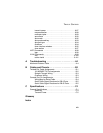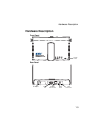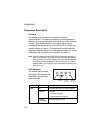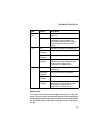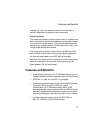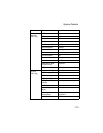
Introduction
1-6
Console Port
This port is used to connect a console device to the access point
through a serial cable. This connection is described under
“Console Port Pin Assignments” on page B-4. The console device
can be a PC or workstation running a VT-100 terminal emulator,
or a VT-100 terminal.
Ethernet Port
The access point has one 10BASE-T/100BASE-TX RJ-45 port
that can be attached directly to 10BASE-T/100BASE-TX LAN
segments. These segments must conform to the IEEE 802.3 or
802.3u specifications.
This port uses an MDI (i.e., internal straight-through) pin
configuration. You can therefore use straight-through twisted-pair
cable to connect this port to most network interconnection
devices such as a switch or router that provide MDI-X ports.
However, when connecting the access point to a workstation or
other device that does not have MDI-X ports, you must use
crossover twisted-pair cable.
The access point appears as an Ethernet node and performs a
bridging function by moving packets from the wired LAN to
remote workstations on the wireless infrastructure.
Note: The RJ-45 port also supports Power over Ethernet (PoE) based
on the IEEE 802.3af standard. Refer to the description for the
“Power Connector” for information on supplying power to the
access point’s network port from a network device, such as a
switch, that provides Power over Ethernet (PoE).
Reset Button
This button is used to reset the access point or restore the factory
default configuration. If you hold down the button for less than 5
seconds, the access point will perform a hardware reset. If you
hold down the button for 5 seconds or more, any configuration




